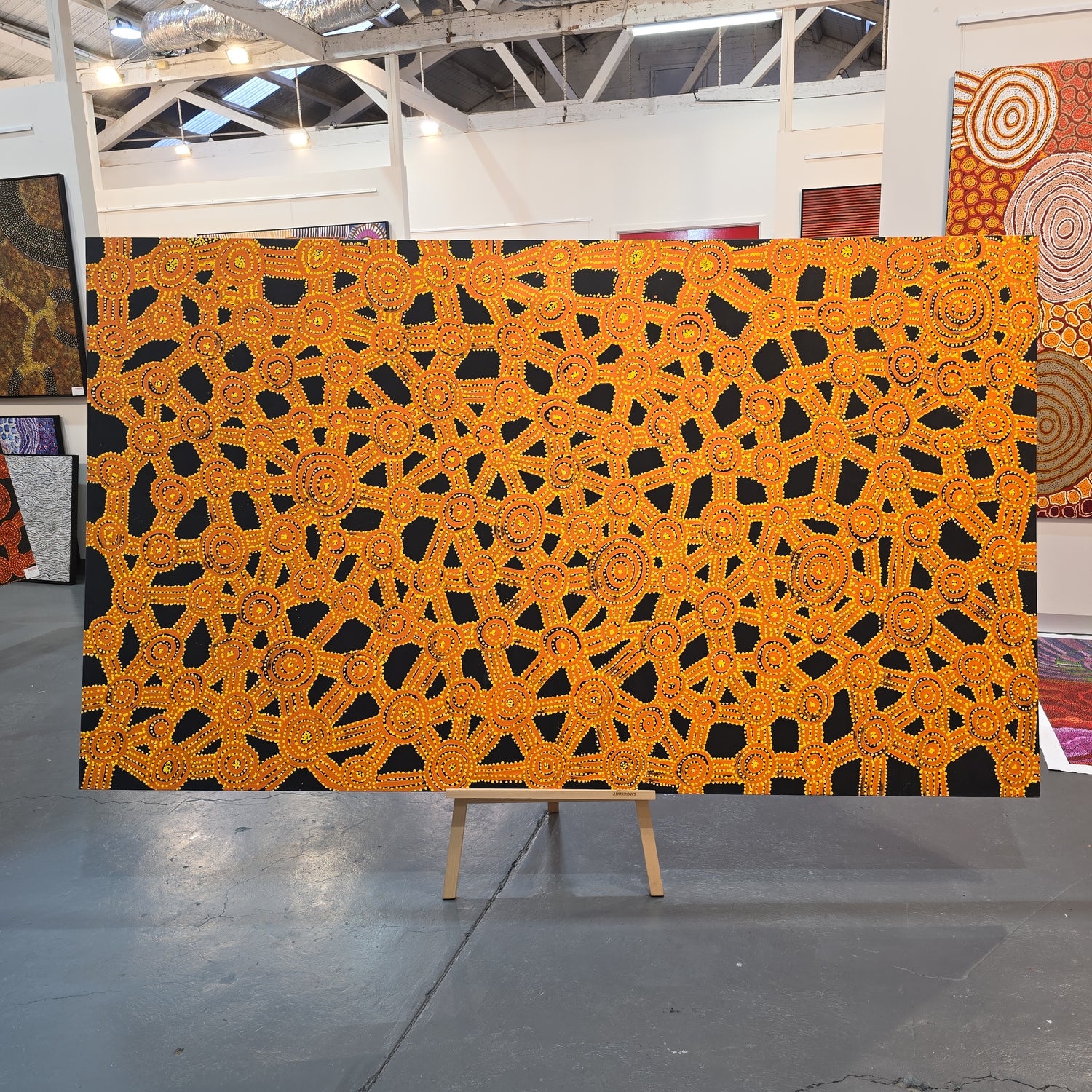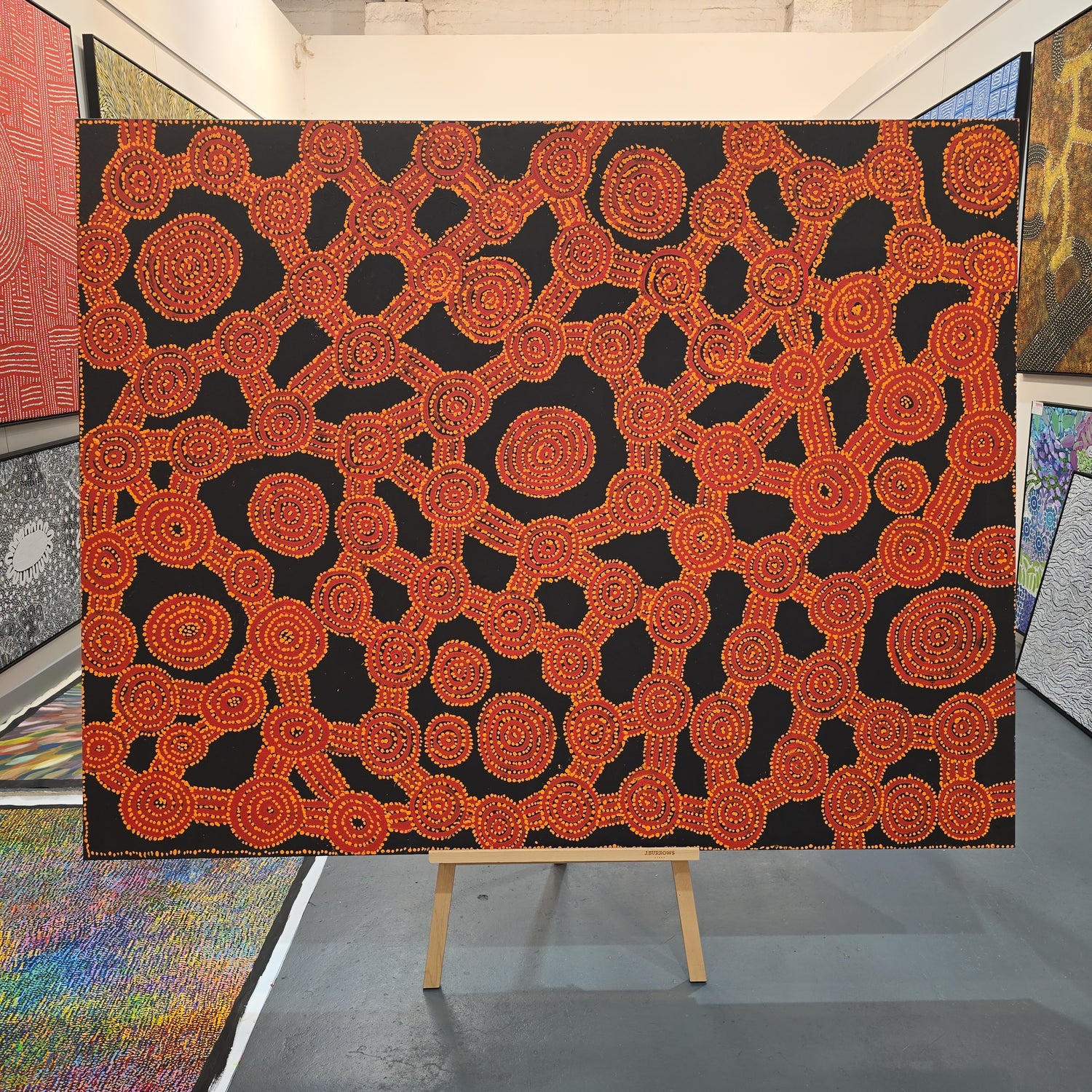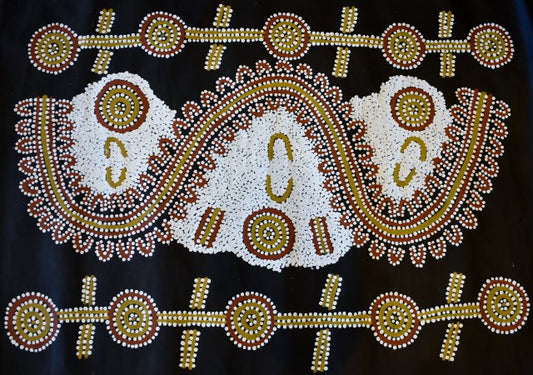Collection: Willy Tjungurrayi
-
Willy Tjungurrayi 600 mm x 1330 mm
CODE : 742Vendor:Willy TjungurrayiRegular price $7,990.00 AUDRegular priceUnit price / per -
Willy Tjungurrayi 730 mm x 1420 mm
CODE : 741Vendor:Willy TjungurrayiRegular price $7,990.00 AUDRegular priceUnit price / per -
Willy Tjungurrayi 1250 mm x 1800 mm
CODE : 7415Vendor:Willy TjungurrayiRegular price $15,000.00 AUDRegular priceUnit price / per -
Willy Tjungurrayi 560 mm x 1400 mm
CODE : 8844Vendor:Willy TjungurrayiRegular price $5,900.00 AUDRegular priceUnit price / per$7,500.00 AUDSale price $5,900.00 AUDSale -
Willy Tjungurrayi 1470 mm x 1870 mm
CODE : 697Vendor:Willy TjungurrayiRegular price $15,000.00 AUDRegular priceUnit price / per -
Willy Tjungurrayi 870 mm x 1450 mm
CODE : 310Vendor:Willy TjungurrayiRegular price $7,500.00 AUDRegular priceUnit price / per -
Willy Tjungurrayi 1400 mm x 2470 mm
CODE : 4213Vendor:Willy TjungurrayiRegular price $22,000.00 AUDRegular priceUnit price / per -
 Sold out
Sold outWilly Tjungurrayi 370mm x 830mm
CODE : 2884Vendor:Willy TjungurrayiRegular price $1,050.00 AUDRegular priceUnit price / per -
Willy Tjungurrayi 670mm x 930mm
CODE : 4044Vendor:Willy TjungurrayiRegular price $4,900.00 AUDRegular priceUnit price / per
Artistry of Willy Tjungurrayi
Willy Tjungurrayi, an eminent aboriginal artist in contemporary Indigenous art, encapsulates the essence of Australian Aboriginal culture through his masterful artworks. With a profound connection to his ancestral land and a deep understanding of traditional storytelling, Tjungurrayi's creations resonate with both cultural significance and artistic brilliance.
Early Influences and Cultural Roots
Born around 1932 in Patjantja, southwest of Lake Mackay in the Northern Territory, Willy Tjungurrayi was a senior Pintupi man. His lineage and communal position endowed him with the responsibility to depict the sacred and secret Tingari Dreaming through his art. Willy was one of three brothers, with Yala Yala Gibbs and George Ward Tjungurrayi also leaving an indelible mark on the Aboriginal art scene.
Born in the remote desert region of Australia, Tjungurrayi's upbringing was imbued with the rich traditions and stories passed down through generations of his indigenous community.
His artistic journey began as a young boy, observing the intricate dot paintings and ceremonial artworks crafted by his elders. These early experiences instilled in him a passion for preserving and sharing his cultural heritage through art.

Artistic Process: Fusion of Tradition and Modernity
Willy Tjungurrayi's artistic journey took shape when he migrated to Haast's Bluff in 1956, and later to Papunya in 1959 due to water supply issues. It was in Papunya that he began painting for Papunya Tula Artists in 1976. By the 1980s, he had solidified his reputation as a senior Pintupi painter, contributing significantly to the movement of returning to Pintupi homelands.

Tjungurrayi's artistic process is a harmonious blend of traditional Aboriginal techniques and contemporary artistic expression. He draws inspiration from ancient Dreamtime stories, which serve as the foundation for his paintings.
Each artwork is meticulously planned, with Tjungurrayi employing a meticulous approach to dot painting, a technique deeply rooted in Aboriginal artistic tradition. The rhythmic application of dots, meticulously arranged to form intricate patterns and designs, serves as a visual language through which Tjungurrayi communicates his connection to the land and its spiritual significance.
Themes and Motifs
Tjungurrayi's paintings are infused with the rich narratives of the Tingari Dreaming song cycle, depicting the ancestral journeys across the land. His canvases often feature dotted roundels connected by parallel lines, symbolizing the travels and stopping places of the Tingari Men. Additionally, he employed vibrant primary and mixed colors to evoke the rhythmic repetition of the Dreaming songs.
In his later works, Tjungurrayi shifted towards a more minimalist approach, utilizing ochre monochrome and endless wavy lines to illustrate the sand hills and the harrowing hailstorm that claimed the lives of the ancestral Tingari Men in the Dreamtime.
Central to Tjungurrayi's artistic repertoire are themes of land, spirituality, and ancestral connections. His paintings often depict intricate aerial views of the vast Australian landscape, adorned with geometric patterns and symbolic motifs. These motifs serve as visual representations of Dreamtime narratives, carrying layers of meaning and significance within their intricate designs.










